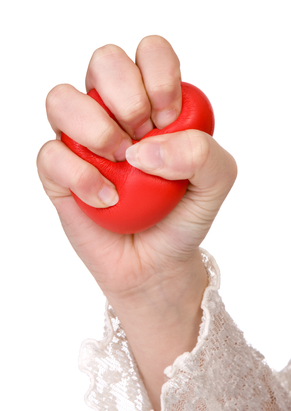Guyside: Girls deserve more than one way to wear a bow.
With the abundance of bow savvy heroines making a mark on the silver screen, it wasn’t any surprise for me to see my daughter don a hood and fill a quiver for Halloween. What was a surprise, however, was how almost every neighbor narrowed their errant guesses to the confines of gender.
“Who are you … Katniss?”
“No.”
“Merida?”
“No.”
“Tauriel from the Hobbit or Susan from the The Chronicles Of Narnia?”
“No and no,” she said. “I’m Robin Hood.”
She said it with enough conviction to corral the conversation. She was Robin Hood and the only person who questioned her about being a girl was a 5-year-old boy. Once she reassured him that a girl could be Robin Hood, he turned his attention to her bow and arrows. Next year, he said in wide-eyed wonder, he would be Robin Hood.
Next year, she said, she would like to be a princess like she was two years ago too. The only bow she sported back then was a yellow one to tie her hair back. But the year before that she was a pirate. And the year before that, she was a wood fairy in the vein of Tinkerbell. There are no limits to her imagination, especially those related to gender.
It’s part of a trait I hope she retains all her adult life too — the art of being gender ambidextrous, whereby every decision she makes is made based on passion and aptitude over the societal shakedowns over being feminine and a feminist. Life is complicated enough without trying to conform to a stereotype or work even harder to avoid one.
It seems to me that there is something inherently wrong when our daughters think that they have to ask permission whether or not they can dress up like Han Solo for Halloween. And while the girl who asked was very fortunate to have Tom Burns (who dressed up as Princess Leia) as a dad, it still haunts me that any 7-year-old girl would be so cognizant of gender-flipping costumes.
It’s almost worrisome as the growing number of parents who think the princess syndrome needs to be cured in seconds. It doesn’t.
Kids aren’t really part of the good role model/bad role model debate unless they are indoctrinated by the people who invented it. Sure, some stories might carry moral messages but none of the princesses really auditioned for the role model moniker (and neither did their princely counterparts, who suffer all sorts of severe character flaws).
The far greater danger is to perpetuate the myth that feminine and feminism have to somehow exist as polar opposites. They don’t. If the operative word is choice, then let girls make their own.
My daughter feels equally comfortable in a sundress or her fast-pitch softball uniform, which is usually covered in dirt five minutes before the warmups are over. She has an appreciation for art and music as much as for engineering and science. She is just as likely to play with Hot Wheels as Barbies, but is no more inclined to wish for wheels instead of feet than she is for that impossible waistline. She enjoys dodgeball as much as Girl Scouts and, on any given day, can show off a pirouette or hold a plank position.
It’s a freedom that I hope she preserves all her life, not as someone who is gender ambiguous but rather gender ambidextrous. Women should never feel forced to give up a stitch of gender identity to achieve equality. On the contrary, it will be my daughter’s ability to embrace her gender without being made a slave to it that will eventually empower her generation to move beyond the idiocy exhibited at companies like Zillow or Uber.
Robin Hood, after all, didn’t ask the poor to fix the inequality of his era. He wanted the rich to change their behavior.
Read MoreBe still my heart: stress, women and heart disease
Heart disease. I have been writing about it for years. And the news doesn’t get much better. According to the American Heart Association, heart disease kills approximately one woman every minute. More importantly, despite the great strides that have been made on the research, treatment and even education fronts, 90% of women in the U.S. have at least one risk factor for heart disease. Yikes!
Allow me to share one of the greatest risk factors, one that you might not be aware of:
Mental stress.
If you are a regular reader of Flashfree, you know that stress can affect mood, sexual desire and symptoms of menopause. And not surprisingly, the association between mental stress and heart disease is well established. However, new study findings published online in the Journal of the American College of Cardiology suggest that mental stress might actually take a greater toll on women’s hearts than on men’s.
In the study (which had originally been designed to assess the impact of an antidepressant on stress-induced heart issues,)male and female participants were exposed to mental stress exercises, including one designed to induce anger. The researchers also evaluated factors that would indicate how the well or poorly the heart was functioning in relation to stress including blood pressure and heart rate as well as reduction in blood flow. Mind you, of the 310 people participating in the study, only 54 were women and this small sample does create certain limitations when it comes to interpreting the findings. However, the report shows that during times of stress, 57% of these women experienced reduced blood flow to their hearts, versus 41% of men. This is not to say that the men dodged the bullet; indeed, men had greater increases in traditional measures such as blood pressure.
Another important finding was the impact of mental stress; women tended to express more negative emotions and experienced a decline in the positive. And, the researchers say that they also observed differences in how the platelets behaved. In the bloodstream, platelets are responsible for stopping bleeding and in aid in clotting. However, they can also clump together to block the flow of blood when the vessels are damaged. In response to mental stress, not only did the blood platelets react more strongly and clump to a greater extent in women than in men, but the women had roughly twice the odds of this occurring.
The researchers say that the findings highlight gender differences in heart disease risk but also suggest that available risk prediction tools may fall short; this is because they don’t measure the full spectrum of mental-stress induced physical and psychological changes. What immediately comes to mind is the recent app launched by the North American Menopause Society, which in addition to promising a more seamless exchange of information and resources between provider and patient, also offers access to cardiovascular risk assessment. That aside, it’s definitely time to change the paradigm. Recent data suggest that death rates from heart disease in women have declined BUT the number has exceeded that of men for the past 20 years. By teasing out the why and what, there may be an avenue to change the narrative. Today, that avenue is mental stress.
The key message is to to be mindful of stress before it stills your heart and steals your life.
Read MoreOn Why We Need to Reclaim Realism
In an article from TIME magazine last year, Virginia Postrel writes about The Twisted Allure of Jihadi Glory. While it features the outcry over the Rolling Stone cover featuring Boston bomber Dzokhar Tsarnaev, it poses a bigger picture question on the power of glamourization.
Postrel shares a quote from novelist Salman Rushdie, no stranger to controversy himself as the author of the 1988 novel, The Satanic Verses. Asked about what motivates suicide bombers, Rushdie’s answer is illuminating:
Terror is glamour – not only, but also. [Terrorists] are influenced by the misdirected image of a kind of magic… The suicide bomber’s imagination leads him to believe in a brilliant act of heroism, when in fact he is simply blowing himself up pointlessly and taking other people’s lives.
As Postrel shares in her piece, Rushdie hits the nail on the head when it comes to how glamourizing something offers an incentive to act upon, to increase the perception of who we are and how we act, which made me think of how glamour warps our everyday lives.
The Power of Glamour
You can go back to virtually any point in history, and you’ll find countless examples of glamourizing something that was anything but.
In her piece, Postrel talks about martial glamour – or how war seemed glamourous to those that would follow in their leader’s footsteps. She talks about Achilles from ancient Greece, but you could also look to the poem The Charge of the Light Brigade, by Alfred Tennyson, to see how war was glamourized.
Forward, the Light Brigade!
Was there a man dismay’d?
Not tho’ the soldier knew
Someone had blunder’d:
Theirs not to make reply,
Theirs not to reason why,
Theirs but to do and die:
Into the valley of Death
Rode the six hundred
When can their glory fade?
O the wild charge they made!
All the world wondered.
Honor the charge they made,
Honor the Light Brigade,
Noble six hundred.
Until the First World War and its huge loss of life, war was seen as a heroic endeavour. Today, we think differently – and yet, as Postrel’s piece shows, some of us don’t.
This is the problem with glamourization – how do we reel in what we encourage blithely?
The Persuasion of Hope
Marketers and brand advertisers have been using glamour in a bid to create desire and action within their target audience for years.
Think back to the black and white movies of the 40’s, where the movie stars of yesteryear would happily smoke on-screen and be regarded as sexy and sophisticated for it. Today, we know the dangers of smoking – just over 70 years ago, it was actively encouraged.
Or look at the success of magazines like Vogue and Elle, that portray perfect women that rarely reflect society’s real women and their various shapes, sizes and lifestyles.
These examples, and others like them, build on the desire of their audience(s) to be more like the actors on screen or the models on the page, as opposed to being happy with who they are.
By tapping into this powerful hope, or desire, brands use the power of persuasion that people need to be something they’re not in order to be valued.
As Postrel shares in the TIME article, that value can come from making powerless people feel significant. In advertising and marketing, that value can come from answering the “if only” question.
- If only I had a better job;
- If only my car was as cool as my neighbours;
- If only I could look good in that tiny bikini;
- If only. If only.
The problem is, even those we aspire to be like aren’t perfect. Magazines take perfectly good-looking people and airbrush them to an even higher plane of “perfection”. Movies use focus filters and post-production effects to showcase their stars in the best light.
By creating an unrealistic desire, we’ve created a culture of hope that can never be met – at least, not until the next campaign where we can start it all over again.
Realism and Reclamation
The problem, of course, is that to deny hope, we deny growth and our future selves. Why shouldn’t we want to reach for something we don’t have, or be like someone we admire?
The thing is, we don’t need to deny ourselves. We should do all these things, and more. But we should do it realistically.
We need to stop promoting the idea that unrealistic imagery is the norm. Individually and in a wider context, we need to understand that glamour is only a facade of what realism truly is. To continue to glamourize our perfect selves doesn’t help us grow – it merely stunts us, and that benefits no-one.
It’s not as if we need to play the glamour card, either.
- The Dove Campaign for Real Beauty has won widespread praise for the way it showcases the beauty of women in all their natural sizes;
- UK retail chain Debenhams has invoked a ban on airbrushing models for their promotional materials;
- Lifestyle magazines like Cosmopolitan are calling for clothes manufacturers to stop the obsession with unrealistic sizes.
These are important steps from the types of companies on the front line that can truly initiate a different way of thinking. But they’re just the first steps.
As marketers, we need to be able to instil desire without taking the lazy way out. As businesses, we need to be more realistic on who our target audiences are and what they really feel, and need.
More importantly, as men – in marketing, advertising and plain old life – we need to look at women the same way we do each other. After all, when was the last time you saw a guy photoshopped to the Nth degree to present a false idea of sexiness to women?
Hopes and dreams are one thing. Selling hopes and dreams is another, and it’s the latter that can make the biggest leap to connecting the two together.
It’s time to see who’s up to the challenge.
image: Julian Rodriguez Orihuela
Read MoreWednesday Bubble: Pink Elephant Redux
Today’s bubble features an oldie but goodie. The more things change, the more they haven’t.
Isn’t it time that we women start to acknowledge the pink elephant in the room???
In 1980, I worked as an intern on the municipal bonds floor of a well-known brokerage/financial institution. Although it was certainly not my “thang,” I learned a tremendous amount about how the business world operated, and most importantly, about the games that people play.
One thing that struck me in particular at that time was the role of women in this business and how they dressed and behaved. Women were not abundant in positions of power, and those who were, well, in some respects, they emulated men; they were aggressive, competitive and not particularly kind to one another.
Clearly, things have changed drastically in the almost three decades that have followed. But one thing that hasn’t changed much is how sisters act in the workplace.
A line from this wonderful article that appeared in the New York Times several years ago made me realize that certain stereotypes continue to perpetuate bad behavior. And, that as Author Peggy Klaus so aptly writes, “the pink elephant is lurking in the room and we pretend it’s not there.”
The pink elephant is lurking in the room.
Klaus’ point is that rather than help build each others career, women often work to derail each other, engaging instead in “verbal abuse, job sabotage, misuse of authority and destroying of relationships.” She cites data suggesting that this type of behavior is directed from women to women >70% of the time, while the men who are “bullies in the workplace,” direct their aggression equally to both genders.
Klaus offers numerous reasons why women become aggressors in the workplace: scarcity of positions, bootstrap (I pulled myself up, why should I help you?) and hyperemotionality that leads to an overinvestment in workplace occurrences that cause them to hold grudges.
Her point, however, is not to determine the why but rather, engage one another to put an end to this type of behavior.
I’ve written previously that as we grow older, friendships and support of one another are essential to our overall wellbeing. Regardless of whether its in the workplace or in our personal lives, supportive relationships allow the soul to flourish and grow. Personal resources as they pertain to social support also help see us through the rougher aspects of menopause.
Should women give preferential treatment to one another? No, absolutely not. But as Klaus says, perhaps we should start treating one another as we want our “nieces, daughters, granddaughters an sisters to be treated.” We should simply… acknowledge the pink elephant in the room. And show it the door.
Read MoreLet’s not turn back time…
 Image copyright: Glasgow Women’s Library.
Image copyright: Glasgow Women’s Library.
Please get to the polls! VOTE!
Read More









